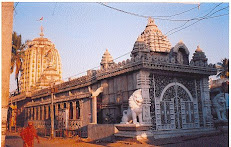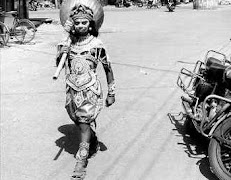Much to the ecstasy of the turtle conservationists and researchers, the much-awaited mass nesting of the endangered Olive Ridley sea turtles have started this year on the shore of river Rushikulya in Ganjam district since Sunday night, said DFO of Rushikulya, AK Jena.
About 80,000 endangered Olive Ridley turtles arrived for nesting on Sunday night on the three-km-long stretch between Purunabandha and Gokharkuda under Rushikulya for laying eggs, said the DFO. According to Jena, ‘Arribada’, the Spanish term used for mass nesting has started and it will continue at least for the next couple of days.
Female lays 120-150 eggs in one go. They arrive at the coast in night and after laying eggs go back to the deep sea water. Hatchlings emerge from these eggs after 45-60 days and find their way to the sea creating a cacophony. It is one of nature’s rare phenomena where babies grow without their mother, said the forest official. The eggs hatched in low temperatures mostly yield males. The mortality rate of the endangered species is so high that one out of every 1,000 eggs laid ultimately hatches and the hatchling survives to become an adult Olive Ridley.
In a bid to give protection to the Olive Ridley sea turtles during the ongoing mass nesting along the Orissa coasts, the forest department is taking all necessary measures. The forest officials and Coast Guard personnels have also engaged themselves in the ongoing turtle conservation programme by stepping up sea-patrolling in order to check illegal entry of trawlers in the prohibited area.
Apart from Rushikulya, the turtles also visit Gahirmatha and Devi river mouths in large numbers every year for mass nesting. Among the nesting grounds, Gahirmatha is known as the world’s largest rookery of the endangered species, said official sources.
To protect the turtles, the forest officials have effectively enforced the ban order from November 1 to May 31 under the Orissa Marine Fishing Regulation Act, 1982 and Orissa Marine Fishing Rules, 1983. Under the Orissa Marine Fishing Regulation Act (OMFRA) and rules framed there under, 5 km of seaward belt in off-shore area from high tide line is exclusively reserved for traditional crafts, and fishing by mechanised vessels is strictly prohibited in the area.
Sea turtles generally nest at night. During the breeding season, males and females migrate from their feeding ground to the breeding ground and mating occurs on the offshore water. The female turtles tend to move towards the beaches in large synchronised concentration. They lay their eggs at midnight in 45 cm-deep pits which they dig with their rear flippers. After laying the eggs in the pits, the female turtles cover the nests with sand and return to the sea in a zigzag manner to confuse predators about the location of the nests.
Though every year endangered Olive Ridley sea turtles come for ‘Arribada’ to the Orissa coasts but it has remained a mystery till date whether the turtles start their annual sojourn from the Pacific Ocean or Arabian Sea before nesting. In order to ascertain the fact, the WII, with the help of State forest department has set up 30 Satellite Telemetric Transmitters on turtles in three nesting places, including Rushikulya, Gahirmatha and Devi river mouth, said Rushikulya DFO.
Scientists of Dehradun-based Wildlife Institute of India (WII) with the help of State forest officials have recently fitted two Platform Transmitter Terminals (PTT), commonly known as satellite telemetric transmitters, on 31st January on the carapaces of a male and a female turtle at the Rushikulya beach. Even plans are afoot by the WII scientists to fit thirty-three more PTTs on the carapaces of turtles in the ongoing turtle season at Rushikulya, Devi and Gahirmatha, informed official sources.
When contacted, DFO of Rajnagar Mangrove Forest Division PK Behera informed that as sporadic nesting of the endangered turtles has been going on in some beaches under the marine sanctuary since the last ten days, there is every possibility that mass nesting phenomenon might have occurred at any moment in the beaches of Babubali, Pentha, Agarnashi, Barunei and Nasi-I and II.a
BENEFITS OF TARA PUJA
-
Goddess #TARA gives ultimate knowledge, power, wealth & salvation.
Ekakshari Tara Mantra(ॐ त्रीं/Om Treem)
Worshiping Maa with devotion protect us from
*...
5 years ago

















.jpg)


















































No comments:
Post a Comment